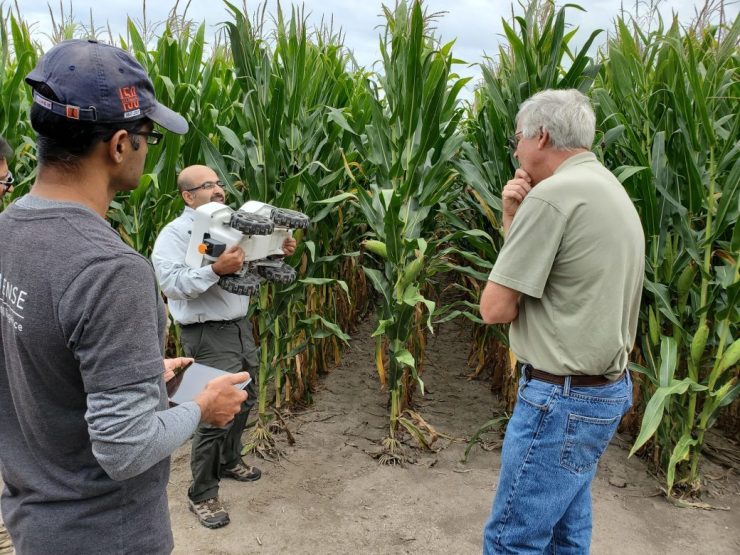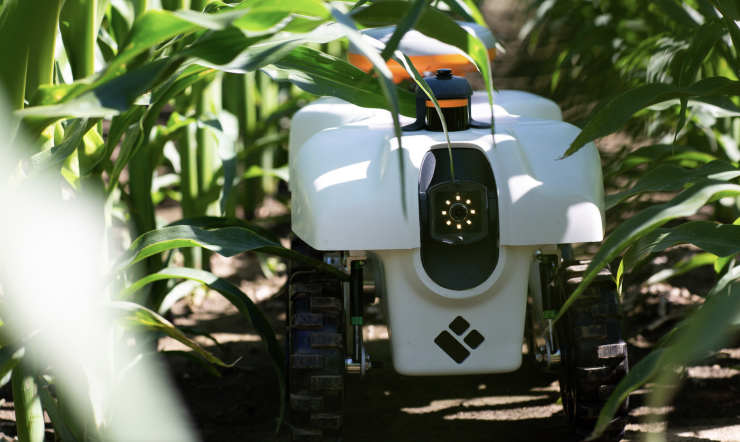This professor wanted to make farming more sustainable so he started a company to build a fleet of smart robots
Girish Chowdhary has been interested in agriculture for a really long time. In fact, his interest dates back to when he lived in Mumbai, India, where he was born and raised. “It seemed like a noble and necessary profession, but very heavily ignored in India. At least, it was when I was there as a kid,” he told me in a recent conversation. “It was kind of considered the low-income profession. Not what you wanted your kids to go into. But my school had this emphasis on going into the rural areas and talking to the people there.” Now, many years later, Chowdhary is a Bioengineering and Agriculture Professor at the University of Illinois at Urbana-Champaign and the Chief Technology Officer of EarthSense, an agriculture intelligence company focused on the thesis of making farming more efficient and sustainable through automation and robotics.
An army of small, autonomous, plant-breeding, phenotype-reading robots may sound like science fiction. But in Chowdhary’s experience, he thinks we might not be too far away from making this a reality. And he wants EarthSense to play a big role in building that future.
Why robots should play a role in farming

When it comes to farming, it seems bigger is better in the industry. According to Chowdhary, large farms are often more successful, while small farms are subsistence. Here’s the big issue: large farms require large equipment. However, technologies for large farms usually don’t scale down to smaller farms.
“Agriculture today only scales up, and that’s true everywhere in the world,” Chowdhary told us. “So you need a large farm and in order to be able to do, you know, deal with that large farm, you need a tractor, but the tractor has to be large because the farm is large and then the capital cost is large. And so at some point, you have to be at a certain scale to be profitable.”
The trickiest part about the current agricultural system is its codependency on the tractor. According to Chowdhary, the two “aren’t separate entities.” For him, this begs the question: By using smaller equipment, could farming be done in a “fundamentally different” and more sustainable way?
Apparently, yes— if we bring in the robots.
How EarthSense thinks robots can make farming more sustainable
When robots are deployed on farms, they can perform tasks such as weeding and monitoring crop health, providing farmers with much-needed insights about treating diseases in crops, and killing weeds with remarkable precision. For TerraSentia, EarthSense’s first robot, it uses several different sensors to do these tasks.

By deploying a small robot, or an army of small robots, depending on the size of the farm, we could have cheap labor to do various tasks on the farm, from monitoring crop health to weeding and spot spraying. Small robots can give growers access to valuable data about crop health and the ability to treat diseases and kill weeds at a new level of precision and efficiency.
“Our robots are really designed to help breed better crops,” Chowdhary told us. These robots, Chowdhary says, make a lot of sense for growing in polycultures. (This just means growing two or more crops together. The opposite is monoculture, where farmers only focus on one crop. This is widely used in industrial farming and considered unsustainable). Growing in polycultures increases genetic diversity, water and soil conservation, and food insecurity, among others.
“The day to days that we dream off is when people say, ‘Okay, I don’t need a large spraying tractor anymore. We can just have these small robots go to the field and mechanically weed things out,” Chowdhary told us. “That’s a hundred percent herbicide-free farm. So those would be very interesting if we can get to those types of situations.”
The challenges and reactions to using robots in farming
Smaller farms might only need two or three robots. Larger farms, however, could often warrant up to 400. So, keeping costs reasonable is the biggest issue with agricultural intelligence at the moment, says Chowdhary. Even still, he says farmers were ecstatic when he first introduced TerraSentia. One organic farmer even drove 13 hours just to see their robots.
“And they were not even as good looking as they are right now. They were just basic three different prototypes, but they were really excited about the idea,” Chowdhary told us. “So I think people are very excited because they can see and feel them [the robots], and it’s graspable and it’s very different from what they’re used to. They really see the potential.”
Central to EarthSense’s mission are two things: create more opportunities in farming and making it easier to get into the industry.
“If you lower the barriers to entry for farming, you know, a lot more people might get interested. You might see in reverse flow even, of people coming back into farming because these new tools are available. Eventually, we hope that if we make little robot tractors, we might even have farms in everyone’s backyard.”
RELATED RIPE OBJECTIVES
Robot